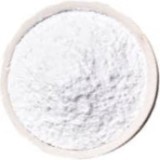|
Calcium Acetate ---- Calcium Borogluconate ---- Calcium Butyrate ---- Calcium Caprylate ---- Calcium Carbonate ---- Calcium Chloride ---- Calcium Citrate ---- Calcium Disodium EDTA ---- Calcium Dobesilate ---- Calcium Fructoborate ---- Calcium Glubionate ---- Calcium Gluconate ---- Calcium Glycerophosphate ---- Calcium Hydroxide ---- Calcium Lactate ---- Calcium Lactobionate ---- Calcium Levulinate ---- Calcium Magnesium Lactate Gluconate ---- Calcium Nitrate ----Calcium Nitrite ---- Calcium Oxide ---- Calcium Phosphate Monobasic ---- Calcium Phosphate Dibasic ---- Calcium Phosphate Tribasic ---- Calcium Pidolate ---- Calcium Polystyrene Sulfonate ---- Calcium Propionate ---- Calcium Saccharate ---- Calcium Stearate ---- Calcium Sulfate ---- Calcium Undecylanate ---- Copper Cupric Chloride |
Calcium Carbonate Specifications of Commercial Pure & BP Ph Eur EP USP IP Analytical Reagent FCC Food Grade Manufacturers & Exporters
Calcium Carbonate USP Grade Specifications: DEFINITION IDENTIFICATION ASSAY Result = [(V - B) x M x F x 100]/W V = Sample titrant volume (mL) Sample: 5.0 g Analysis: Mix the Sample with 10 mL of water, and add hydrochloric acid, dropwise, with agitation, until it ceases to cause effervescence, then add water to make the mixture measure 200 mL, and filter. Wash the insoluble residue with water until the last washing shows no chloride and ignite and weigh the residue. Acceptance criteria: NMT 0.2%; the weight of the residue does not exceed 10 mg. Arsenic: To pass the test. NMT 3 ppm Barium: A platinum wire, dipped in the filtrate obtained in the test for Acid-Insoluble Substances and held in a nonluminous flame, does not impart a green color. Iron: To pass the test by Ultraviolet-Visible Spectroscopy. Lead: Sample solution: 1.0 g in 5 mL of water Analysis: To the Sample solution slowly add 8 mL of 3 N hydrochloric acid, evaporate on a steam bath to dryness, and dissolve the residue in 5 mL of water. Acceptance criteria: NMT 3 ppm Limit of Fluoride: To pass the test. Acceptance criteria: NMT 50 ppm Limit of Magnesium and Alkali Salts: To pass the test. Acceptance criteria: NMT 1.0%; the weight of the residue is NMT 5 mg. Mercury: To pass the test. Acceptance criteria: NMT 0.5 ppm Loss on Drying: Dry a sample at 200C for 4 h: it loses NMT 2.0% of its weight. Packaging and Storage: Preserve in well-closed containers. Calcium Carbonate BP Grade Specifications DEFINITION CHARACTERS IDENTIFICATION TESTS Calcium Carbonate FCC Food Grade Specifications DESCRIPTION REQUIREMENTS Calcium Carbonate Analytical Reagent Specifications REQUIREMENTS MAXIMUM ALLOWABLE |
Crystal Clear Products and the group companies are manufacturing chemicals since several decades. We have automatic vacuum operated titanium evaporators and SS316 equipments to produce top grade of chemical products. We have toll manufacturers and representatives in China, UAE, Europe, Canada & USA and agents & customers in all countries like USA, Canada, Europe, UAE, South Africa, Tanzania, Kenya, Egypt, Nigeria, Uganda, Turkey, Mexico, Brazil, Chile, Argentina, Bangkok Thailand, Kaula Lumpur Malaysia, Dubai UAE etc. & sales representative in Chicago, Houston New York & Los Angeles, USA. Associated units are FDA-GMP certified, Halal and/or Kosher certified, REACH registered, ISO-9001, ISO-22000 HACCP certified, Crisil Rated.
Contact Calcium Carbonate IP BP Ph Eur EP JP USP ACS Analytical Reagent FCC Food Grade manufacturers exporters at:

Crystal Clear Products
Plot No-C1-1031-9, GIDC Estate, Panoli, Ankleshwar, Bharuch, Gujarat - 393002. India
TELEPHONE: (OFFICE) 91-22-23770100, 23726950, 23774610, 23723564. FAX: 91-22-23728264
e-mail: info@crystalclearproducts.org
Manufacturers, Suppliers of IP BP Ph Eur EP JP USP FCC Food, ACS Reagent Grades of Chemicals like Calcium Carbonate




